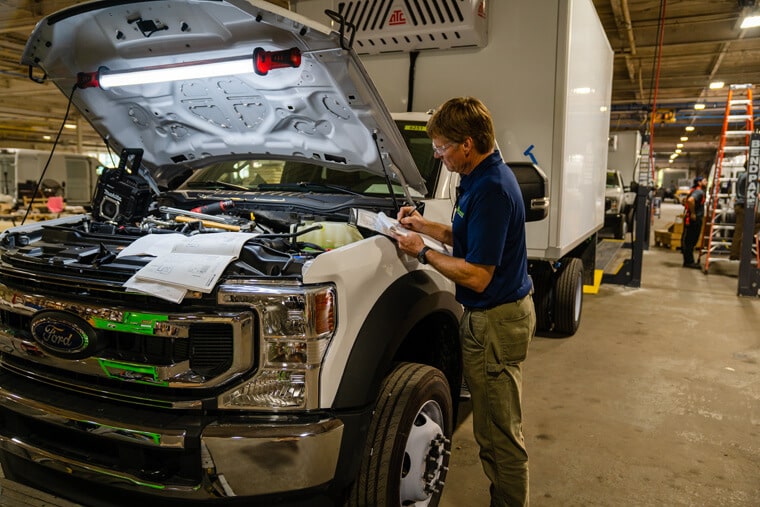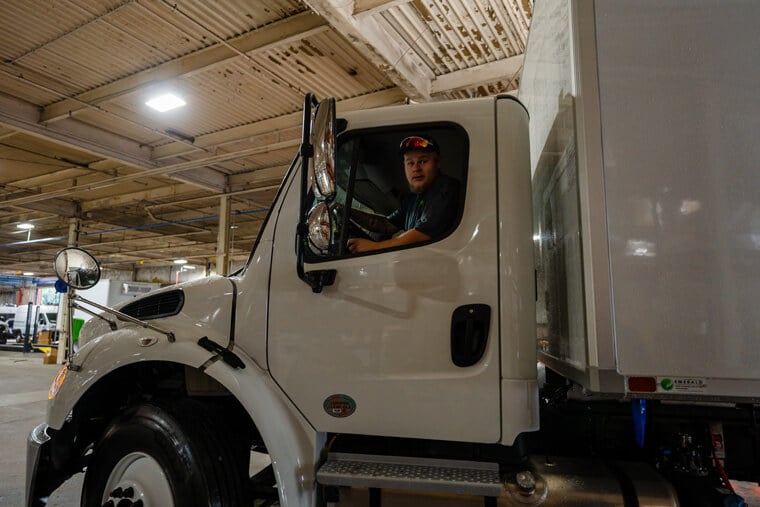
Cold Chain Logistics and the Fresh Flower Industry
Joe Dickman | May 27th, 2022
While people typically refer to their local florist or garden department to purchase fresh flowers, they must undergo a temperature-controlled and transcontinental journey before reaching the shelves. The relationship between cold chain logistics and the fresh flower industry is imperative to the quality of floral products used for selling. Cold chain logistics allows safe transportation of temperature-sensitive goods, like flowers, to maintain quality from the place of origin. Flowers are delivered on a cold logistics journey through small reefer trucks and other refrigerated vehicles for shipment. Understanding the cold chain logistics process also outlines what business owners look for when purchasing refrigerated trucks and vans for sale. Explore the inner workings of cold chain logistics and the fresh flower industry to learn how flowers go from their cold chain venture to your vase.
Recipe Order
The collection of flowers required for your favorite bouquet is referred to as the “recipe.” The recipe is sent to flower harvesters one year in advance for growers to plan operations. The recipe growers receive also determines the kind of labor, transportation, and land usage required.
Floral Harvest
The process of cold chain logistics begins with flower harvesting. Flowers begin decomposition the moment they’re picked and require immediate cutting, bundling, and processing in the early morning hours to avoid high temperatures.
Loading Cargo
Flowers are immediately placed in refrigerated vehicles after harvesting. A temperature-controlled environment puts flowers in a state of dormancy to prevent blooming, wilting, or frequent watering during the transportation process. Flowers that require more water have higher transportation costs and take up more space in the vehicle’s cargo box.
Unloading Cargo
Refrigerated trucks and vans deliver the flowers to a temperature-controlled storage facility to prepare for transcontinental shipment. Flower loads are palletized or stacked for placement on the airplanes for shipment to Miami, Florida; Miami is the hub spot for flower imports in the United States. When flowers arrive at the international airport, the time-sensitive unloading process must begin quickly.
Custom Clearance
The U.S Department of Agriculture inspects the shipped flowers for insects, fungus, or other signs of deterioration that might have occurred during the journey. If a load shows signs of disease or pests, it is quarantined for sanitization until it’s clear for selling, or is disposed of. After approval, flowers are sent to warehouses of local importers, brokerage houses, or wholesalers.
After undergoing the cold logistics journey, the packaged flowers go to independent businesses for final delivery. The elegance of a floral arrangement appears simple, but is a product of a demanding and involved transportation process. Emerald Transportation Solutions provides high-quality refrigerated vehicles to optimize the transportation process of temperature-sensitive goods and maximize cold chain productivity.
Related Articles
Contact Us
Feel Free To Contact Us If You Have Any Questions
What does under DOT mean?
Questions regarding DOT requirements come up often. 10,000 lbs GVW (gross vehicle weight) and over are commercial vehicles that fall under the Department of Transportation regulatory requirements.
What is the difference between GVW and payload?
GVW or Gross Vehicle Weight is the entire weight of the vehicle including the payload. The payload weight represents the amount of cargo you are hauling.
What is a self-powered unit and a vehicle-powered unit?
A self-powered unit has its own fuel source and will run independent of the truck. This is the heaviest and most expensive option. While vehicle-powered units run off the engine via a compressor mounted on the engine. These are less expensive and lighter in weight but you must run the truck or plug the electric standby into shore power.
What does K-factor mean and why is that important?
K-factor is a term that stands for the overall insulating value of the container (truck body). Quite simply the lower the K-factor the better the truck body will be able to maintain a given temperature and require less energy to do so.
How much lighter is a Poly Van vs a US spec body?
Poly Van bodies are very light. On average we estimate we are 75-150 lbs per foot lighter than a traditional sheet and post foamed in place body. These weight savings translates to less fuel burn and less CO2 emissions, along with added payload, the most important benefit.






